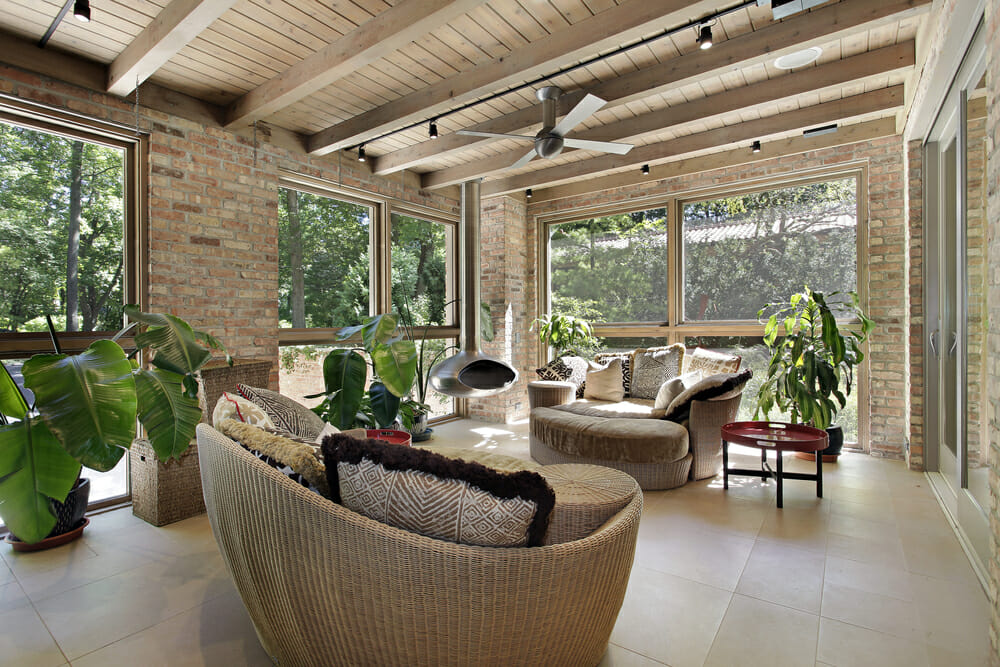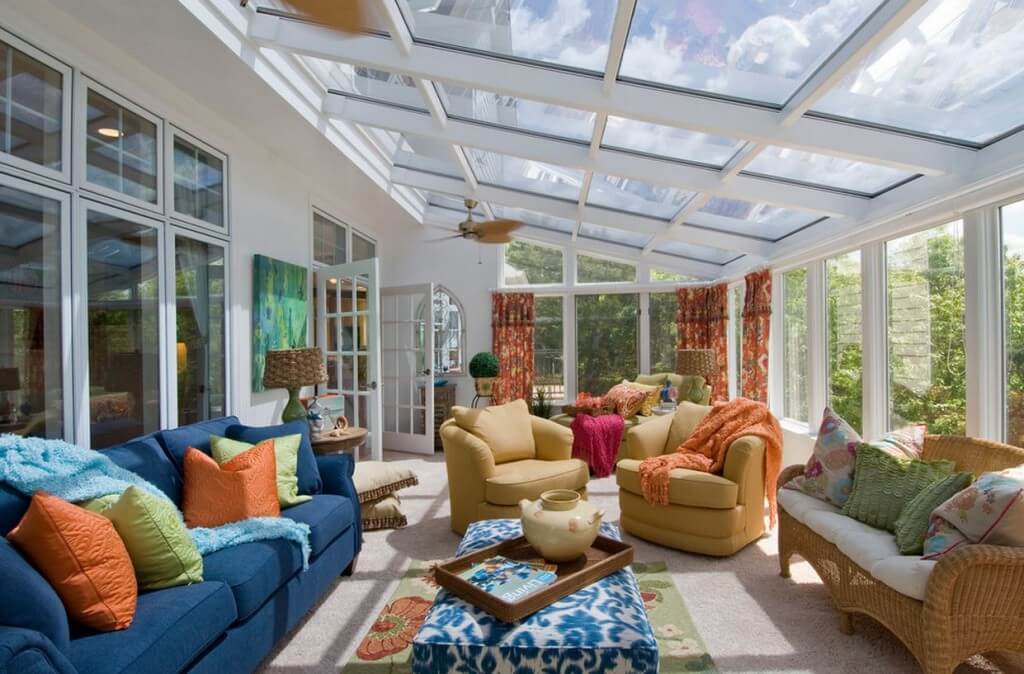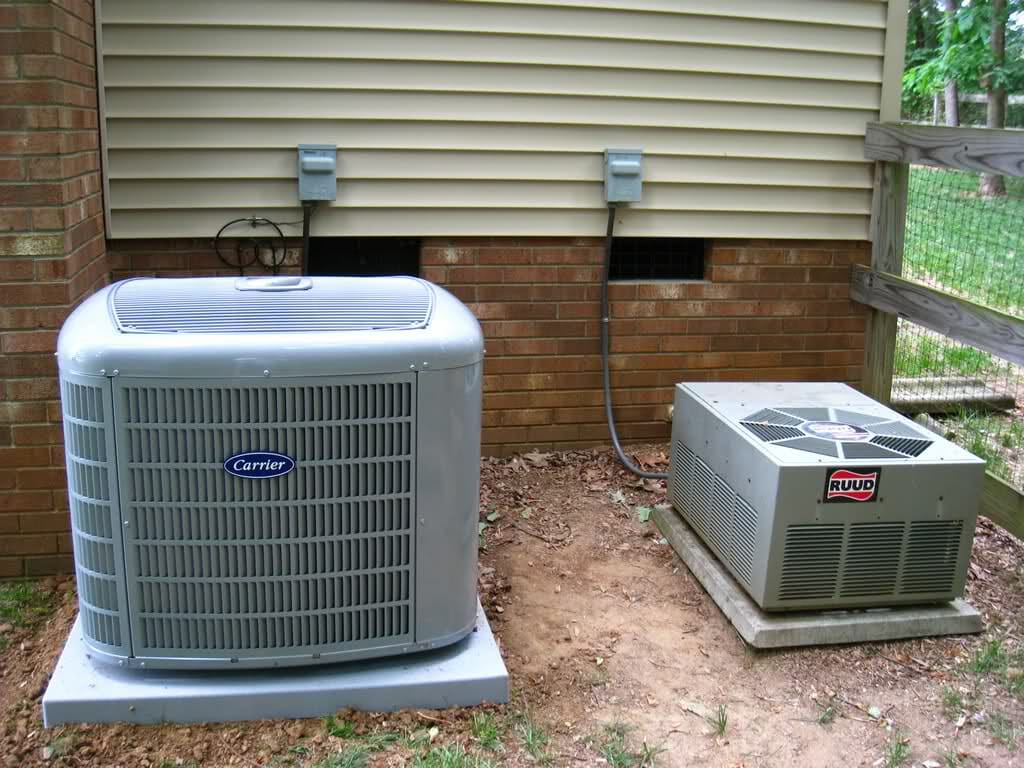Are you doing a windows project?
Modernize can pair you with three to four pros in your area, so you can compare options and save time and money.
How to Make Your Sunroom Energy Efficient
Thinking of building a sunroom but concerned about skyrocketing energy bills? Or perhaps you already have a sunroom but struggle to use it year-round due to temperature issues? Whether you’re retrofitting an existing space or constructing a new one, there are several ways to make your sunroom energy-efficient and comfortable year-round.

Energy-Saving Retrofits for Your Existing Sunroom
It’s not uncommon for a sunroom to be freezing cold in the winter and intolerably hot in the summer. But there’s an easy way to fix this! The type of glass in your window panes is one of the biggest factors to affect your sunroom’s temperature — and therefore, your comfort.
In older sunrooms especially, the glass may be too thin to effectively moderate temperatures inside. The frames around the glass may also leak, too. Plus, depending on the design of the structure, there may not be enough insulation to keep conditioned air inside, while the external air remains outside.
Short of replacing the glass, here’s what you can do to improve energy-efficiency in the space.
- Seal Leaks: Use clear caulk to add weatherstripping around window and door frames to prevent air from leaking. This simple step can significantly reduce temperature fluctuations.
- Tint Your Windows: Window tinting helps block ultraviolet rays, reducing glare and fading furniture. Consider low-E coatings that block solar heat in the summer and retain warmth in winter.
- Cover Windows: In winter, use plastic weatherization kits or hang insulated curtains to keep warmth inside. In summer, use reflective shades to minimize heat from the sun.
- Install a Ceiling Fan: A ceiling fan will help circulate air in the summer, cooling the space, and in winter, reversing the fan direction will help distribute warm air evenly.
Maximizing Energy Efficiency for New Sunroom Construction
When building a new sunroom, thoughtful design can make a huge difference in energy efficiency. Start with the following considerations:
Find the Right Contractor for Your Windows Project
Whether you’re ready to begin your project now or need some expert advice, our network of contractors are here to help. With a few simple questions, we’ll find the best local professionals for you
- Location: Choose a site that’s shaded during summer but allows sunlight to warm the room in winter. Positioning your sunroom to benefit from shade in warmer months, with access to sun in colder months, is ideal. Planting deciduous trees can help provide shade during summer and let sunlight in during winter.
- ENERGY STAR® Windows: Start with high-quality windows. Opt for U-factor rated windows to minimize heat loss, and choose a low SHGC (solar heat gain coefficient) for the right balance of sunlight and heat in the room.
- U-Factor and SHGC: The U-factor measures heat retention; lower values are better for colder climates. SHGC measures how much solar heat the glass allows in; lower values are better in hot climates to reduce cooling costs.
Maximize Insulation in Your Sunroom
To further improve energy efficiency, ensure your sunroom is properly insulated. Insulation should be considered in the ceiling, floors, and walls. For sunrooms with glass panels, look into insulated glass or thermal breaks between panels to minimize heat transfer.
- Ceiling and Floor Insulation: A sunroom with a traditional roof and ceiling can be insulated more easily than one with floor-to-ceiling glass. Consider adding insulation to both the ceiling and the floor to keep temperatures consistent.
Heating and Cooling
To use your sunroom year-round, heating and cooling are essential. Consider these options for year-round comfort:
- Connect to Home HVAC: If possible, integrate your sunroom with your home’s heating and cooling system.
- Portable Units: Alternatively, consider portable air conditioning units or space heaters to regulate the temperature, especially if you don’t want to tie your sunroom into the main system.
Once you’ve taken steps to optimize your sunroom’s energy efficiency, it’s time to enjoy it! Use your sunroom as a relaxing retreat, a place for entertaining, or even as a small greenhouse for seedlings and herbs.
Find the Right Contractor for Your Windows Project
Whether you’re ready to begin your project now or need some expert advice, our network of contractors are here to help. With a few simple questions, we’ll find the best local professionals for you
Reviews from Real Homeowners
Welcome to Homeowner Resources! We are the Modernize blog. Modernize pairs more than 3 million homeowners a year with pre-vetted contractors in their area. This blog started because we believe homeowners should know everything about their homes, from how their HVAC works to which front door colors they might love. On Homeowner Resources, you can find information on every part of your home, right down to how you can negotiate with contractors to get the best price. Here's more about the blog.
Need a contractor? Learn more about how Modernize finds the right pro for you.


